Siddartha Pullakhandam
Robust and Fine-Grained Detection of AI Generated Texts
Apr 16, 2025Abstract:An ideal detection system for machine generated content is supposed to work well on any generator as many more advanced LLMs come into existence day by day. Existing systems often struggle with accurately identifying AI-generated content over shorter texts. Further, not all texts might be entirely authored by a human or LLM, hence we focused more over partial cases i.e human-LLM co-authored texts. Our paper introduces a set of models built for the task of token classification which are trained on an extensive collection of human-machine co-authored texts, which performed well over texts of unseen domains, unseen generators, texts by non-native speakers and those with adversarial inputs. We also introduce a new dataset of over 2.4M such texts mostly co-authored by several popular proprietary LLMs over 23 languages. We also present findings of our models' performance over each texts of each domain and generator. Additional findings include comparison of performance against each adversarial method, length of input texts and characteristics of generated texts compared to the original human authored texts.
Improving Multilingual Capabilities with Cultural and Local Knowledge in Large Language Models While Enhancing Native Performance
Apr 13, 2025



Abstract:Large Language Models (LLMs) have shown remarkable capabilities, but their development has primarily focused on English and other high-resource languages, leaving many languages underserved. We present our latest Hindi-English bi-lingual LLM \textbf{Mantra-14B} with ~3\% average improvement in benchmark scores over both languages, outperforming models twice its size. Using a curated dataset composed of English and Hindi instruction data of 485K samples, we instruction tuned models such as Qwen-2.5-14B-Instruct and Phi-4 to improve performance over both English and Hindi. Our experiments encompassing seven different LLMs of varying parameter sizes and over 140 training attempts with varying English-Hindi training data ratios demonstrated that it is possible to significantly improve multilingual performance without compromising native performance. Further, our approach avoids resource-intensive techniques like vocabulary expansion or architectural modifications, thus keeping the model size small. Our results indicate that modest fine-tuning with culturally and locally informed data can bridge performance gaps without incurring significant computational overhead. We release our training code, datasets, and models under mit and apache licenses to aid further research towards under-represented and low-resource languages.
1-800-SHARED-TASKS at RegNLP: Lexical Reranking of Semantic Retrieval (LeSeR) for Regulatory Question Answering
Dec 08, 2024



Abstract:This paper presents the system description of our entry for the COLING 2025 RegNLP RIRAG (Regulatory Information Retrieval and Answer Generation) challenge, focusing on leveraging advanced information retrieval and answer generation techniques in regulatory domains. We experimented with a combination of embedding models, including Stella, BGE, CDE, and Mpnet, and leveraged fine-tuning and reranking for retrieving relevant documents in top ranks. We utilized a novel approach, LeSeR, which achieved competitive results with a recall@10 of 0.8201 and map@10 of 0.6655 for retrievals. This work highlights the transformative potential of natural language processing techniques in regulatory applications, offering insights into their capabilities for implementing a retrieval augmented generation system while identifying areas for future improvement in robustness and domain adaptation.
SeQwen at the Financial Misinformation Detection Challenge Task: Sequential Learning for Claim Verification and Explanation Generation in Financial Domains
Nov 30, 2024Abstract:This paper presents the system description of our entry for the COLING 2025 FMD challenge, focusing on misinformation detection in financial domains. We experimented with a combination of large language models, including Qwen, Mistral, and Gemma-2, and leveraged pre-processing and sequential learning for not only identifying fraudulent financial content but also generating coherent, and concise explanations that clarify the rationale behind the classifications. Our approach achieved competitive results with an F1-score of 0.8283 for classification, and ROUGE-1 of 0.7253 for explanations. This work highlights the transformative potential of LLMs in financial applications, offering insights into their capabilities for combating misinformation and enhancing transparency while identifying areas for future improvement in robustness and domain adaptation.
1-800-SHARED-TASKS @ NLU of Devanagari Script Languages: Detection of Language, Hate Speech, and Targets using LLMs
Nov 11, 2024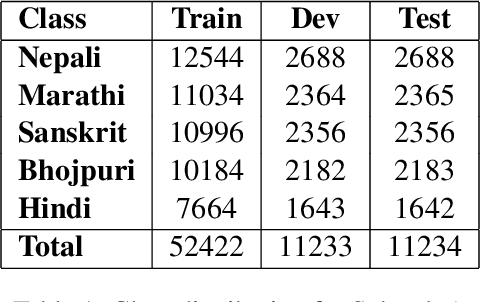
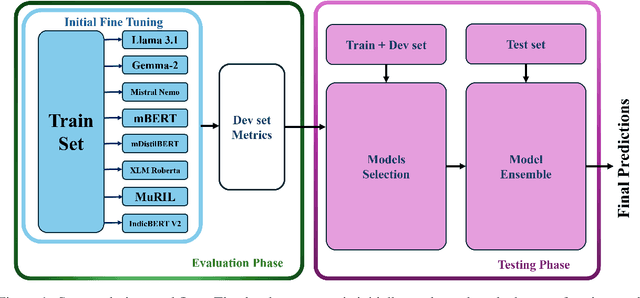
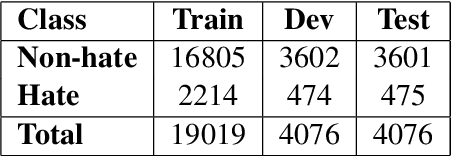
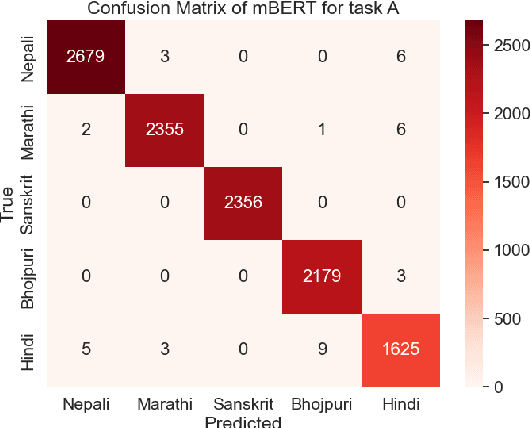
Abstract:This paper presents a detailed system description of our entry for the CHiPSAL 2025 shared task, focusing on language detection, hate speech identification, and target detection in Devanagari script languages. We experimented with a combination of large language models and their ensembles, including MuRIL, IndicBERT, and Gemma-2, and leveraged unique techniques like focal loss to address challenges in the natural understanding of Devanagari languages, such as multilingual processing and class imbalance. Our approach achieved competitive results across all tasks: F1 of 0.9980, 0.7652, and 0.6804 for Sub-tasks A, B, and C respectively. This work provides insights into the effectiveness of transformer models in tasks with domain-specific and linguistic challenges, as well as areas for potential improvement in future iterations.
Augmenting Legal Decision Support Systems with LLM-based NLI for Analyzing Social Media Evidence
Oct 21, 2024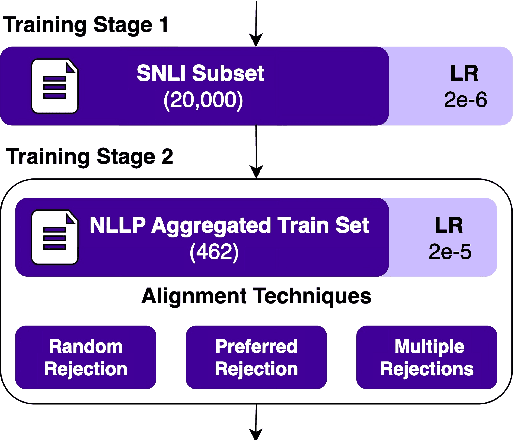


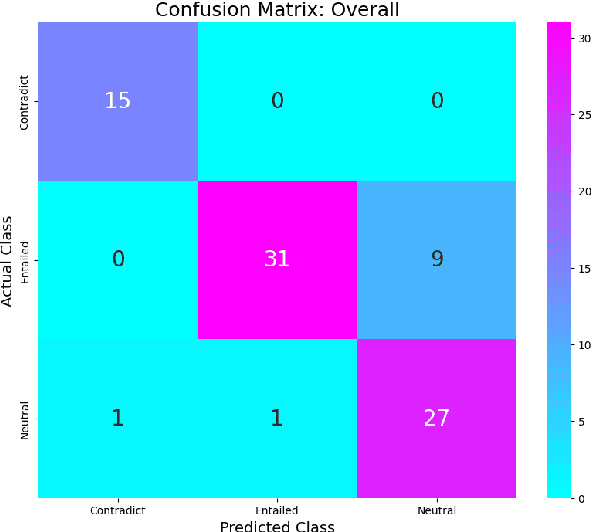
Abstract:This paper presents our system description and error analysis of our entry for NLLP 2024 shared task on Legal Natural Language Inference (L-NLI) \citep{hagag2024legallenssharedtask2024}. The task required classifying these relationships as entailed, contradicted, or neutral, indicating any association between the review and the complaint. Our system emerged as the winning submission, significantly outperforming other entries with a substantial margin and demonstrating the effectiveness of our approach in legal text analysis. We provide a detailed analysis of the strengths and limitations of each model and approach tested, along with a thorough error analysis and suggestions for future improvements. This paper aims to contribute to the growing field of legal NLP by offering insights into advanced techniques for natural language inference in legal contexts, making it accessible to both experts and newcomers in the field.
 Add to Chrome
Add to Chrome Add to Firefox
Add to Firefox Add to Edge
Add to Edge